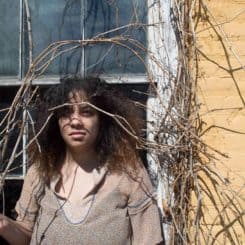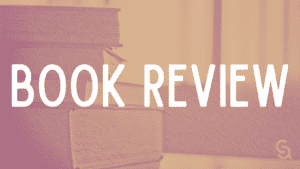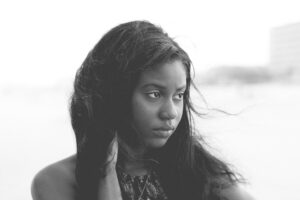 I am not black.
I am not black.
I am not white.
I am somewhere between the ink and the page,
the word that is blurred out.
I am not what you assume
She speaks Spanish…
can’t quite place her….
definitely not from around here
I am from around here.
I grew up down that stone road with the red barn
and the white parents.
Who tried to raise me to see beyond the confederate
flags sold next to corn at the county fair.
I see beyond those things
because I can,
these hazel eyes
sensitive
to
blending
of
colors
sensitive to words like,
“You can’t stand in this line because you are black.”
But you say that I’m not black or at least, I am super white
Well, why I can’t be here?
Why can’t I trace these tree rings and find my own generation my own story?
With each new day, the cherry blossom blooms
red like blood on a white shirt
he is not armed.
he is not armed.
Well I am armed,
Armed with the truth of who I am.
You say I cannot speak for black people,
I cannot speak for black girls
because my hair is actually nice,
well that’s the first time I’ve ever heard that.
I will speak for myself then,
I will say that I have found the secret to survival for myself
it’s speaking about your pain, letting it crochet into beautiful yellow daisies
Not letting it fade away water it when you can
At night, I imagine myself as an owl.
Round and perched atop the highest fir.
Looking around and around
at each of you
looking you in your eyes
to see if face to face
we are actually
the same.
Katelyn Durst is a community artist, creative activist, teacher and youth worker. She has worked within urban youth development and urban community development for ten years and has taught poetry for six years, recently conducting poetry therapy workshops at a youth psychiatric hospital, and for Freedom Schools summer programming in a workshop focused on healing from the unjust deaths of youth of color. Katelyn is currently pursuing a master’s in Urban Studies and Community Arts from Eastern University with a focus on trauma-informed art-making to build sustainable and transformative resiliency within urban/inner-city and displaced communities. In her spare time, she dreams of becoming an urban beekeeper. She is poet-in-residence at The Mudroom, where this poem first appeared.



2 Responses
This is very beautiful. Thank you
Beautiful work thanks for sharing this!